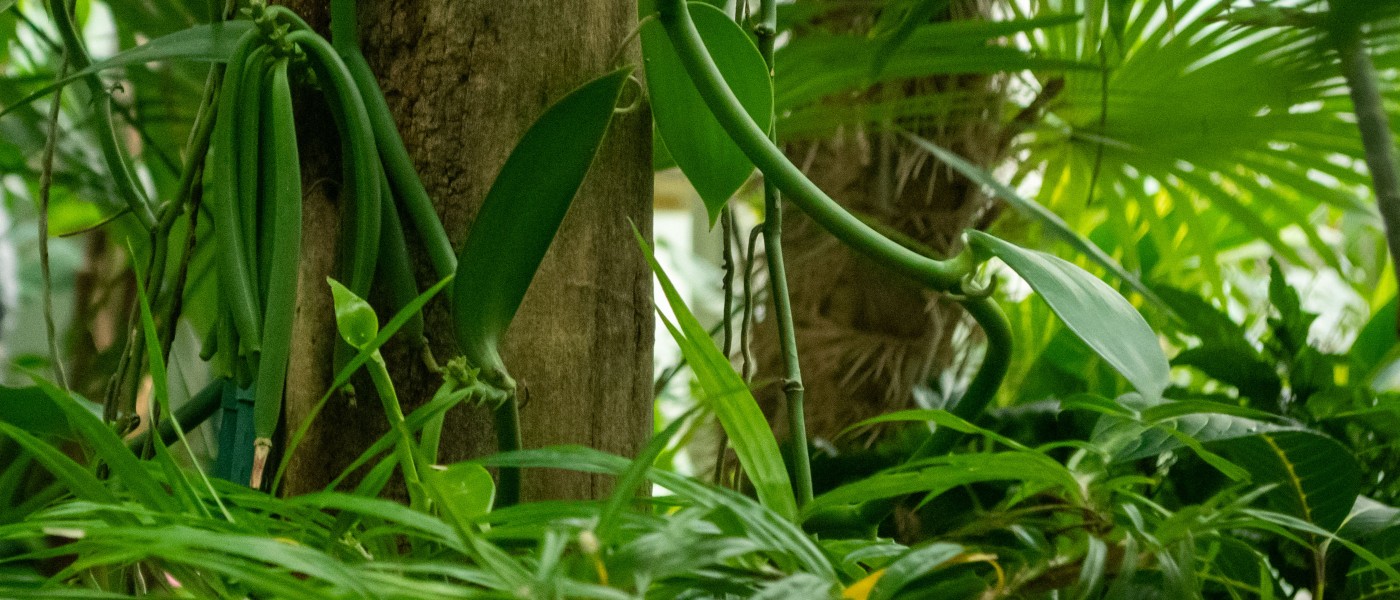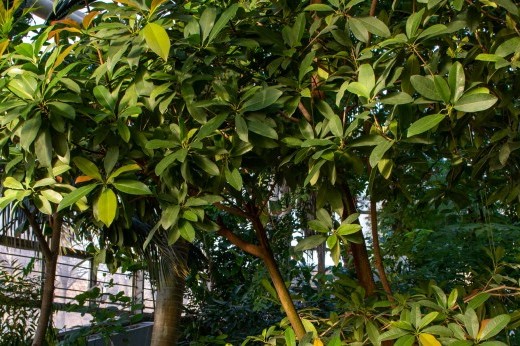A vanilla orchid (Vanilla planifolia) is fruiting right now in the Tropical Pavilion at Brooklyn Botanic Garden. Look closely at the vine, growing on the trunk of an old breadfruit tree, and you’ll see clusters of long, green beans near eye level.
An epiphyte, Vanilla planifolia doesn’t grow in soil; rather, it grows on the surface of other plants or objects, absorbing moisture from the air. Over the next few months, these beans will slowly ripen, turning yellowish-brown at the tip where the bean connects to the stem.
It takes time to produce a vanilla bean. First planted in 2019, this orchid started to flower in 2021, and was successfully hand-pollinated in spring 2023.
“The vine has to be of a certain length before it will start flowering,” explains Kate Murphy, Tropical Pavilion gardener. Flowering then occurs for a few weeks each year in a succession of blooms, with each flower only lasting for one day—so if you’re trying to hand-pollinate, timing is important.
Hand-pollination of Vanilla planifolia, says Murphy, “is just connecting the male bit to the female bit.” But it requires some dexterity; it’s easy to destroy parts of the plant in the process.
Using a small twig, she peels away the petals to reveal the orchid’s reproductive parts. The pollen is held inside the anther cap in the pollinia, a sticky pollen sac. Murphy connects this mass of pollen to the stigma, or female reproductive part.

Of 110 vanilla orchid species, Vanilla planifolia is one of the few cultivated for its beans. Native to the tropical forests of Central America and northern South America, it is currently endangered in the wild. It’s believed to be pollinated by several species of bees; mainly large, hairy orchid bees in the genus Eulaema.
As Rosa Abreu-Runkel recounts in Vanilla: A Global History, vanilla beans were used and cultivated by Indigenous peoples as early as 3,000 years before the Spanish conquest of Mexico—including by the Maya, the Totonac people, and the Aztecs—and are still grown in the region. Other names for vanilla include sisbik-k’aax (Maya), tlilxóchitl (Nahuatl), and cashisha (Totonaco).
Today, Madagascar is the world’s leading producer of vanilla beans. When cultivated outside of their pollinators’ native range, the plants are typically hand-pollinated. The hand-pollination process was first developed in 1841 by Edmond Albius, an enslaved 12-year-old boy living on the island of Réunion in the Indian Ocean. Though he was eventually freed, Albius was never compensated for his transformative discovery, which helped pave the way for today’s roughly $1 billion vanilla market.
Once picked, the beans must be cured in a lengthy, complex process before becoming the culinary staple we recognize. At BBG, the beans are typically used for educational purposes. Come check them out in the Tropical Pavilion before they’re harvested this spring.



